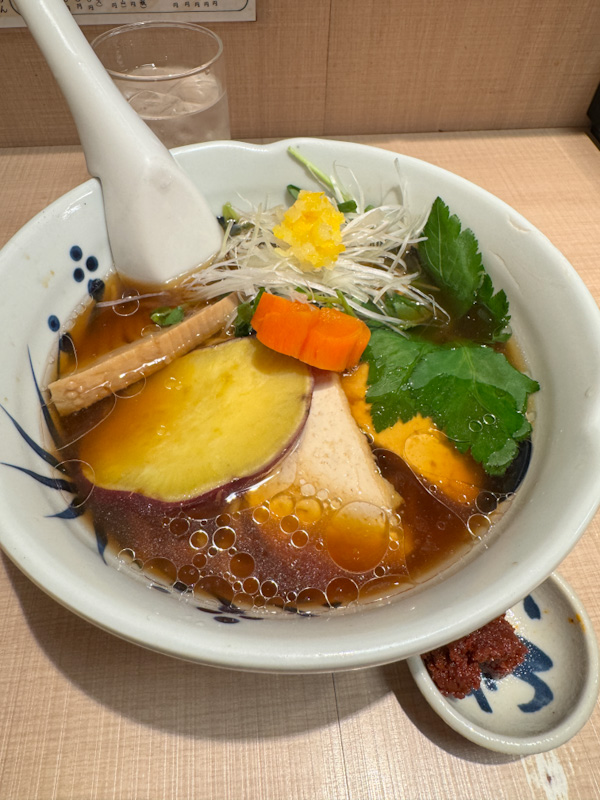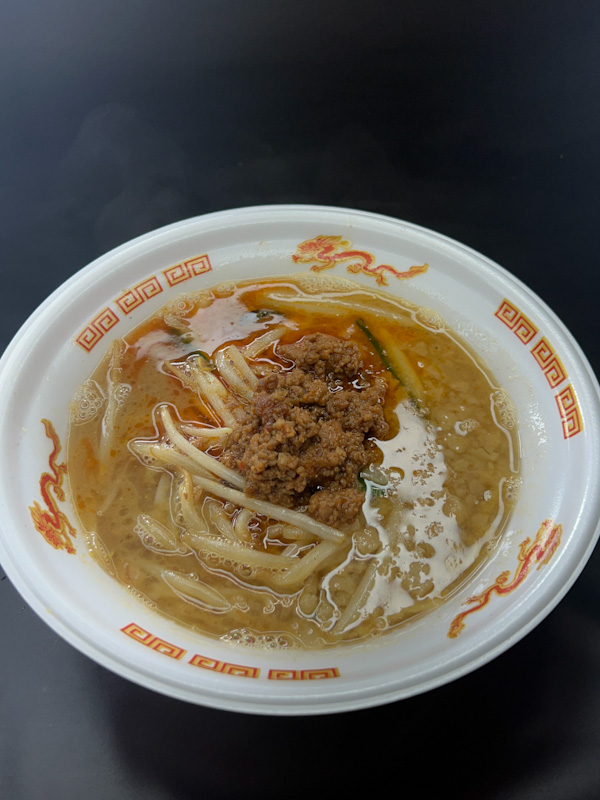When people talk about ramen, they often obsess over the noodles or toppings. But ask any serious ramen maker and they’ll tell you—broth is everything, and dashi is often the backbone of it.
Recently, I dropped by Ninben, a long-established dashi specialist in Nihonbashi, to dive deeper into the world of dried fish, umami, and what really goes into a good bowl. What I found was part demonstration, part pantry, part tiny eatery—and pretty fascinating.
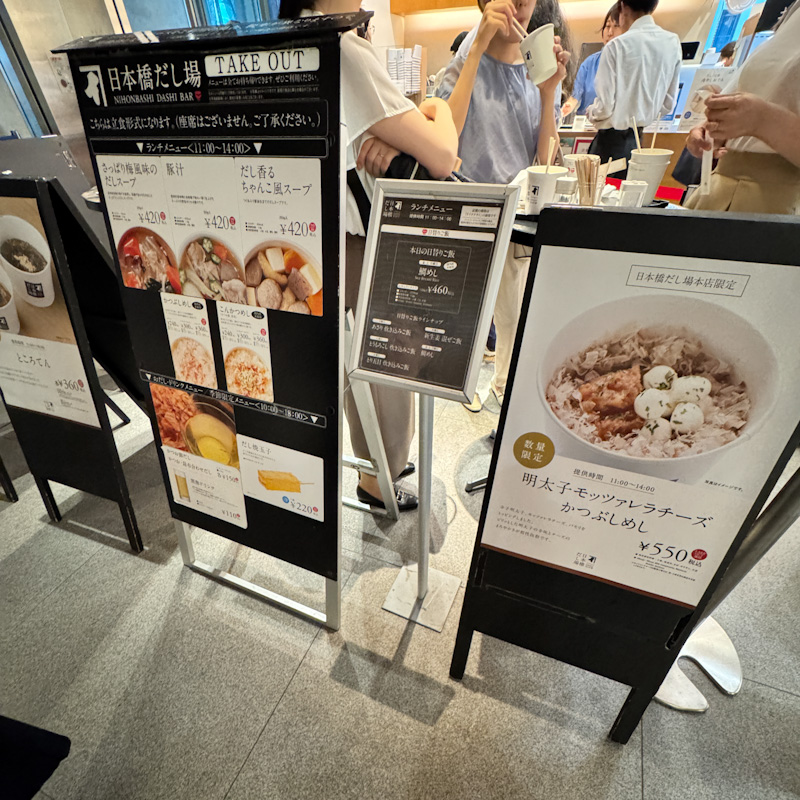
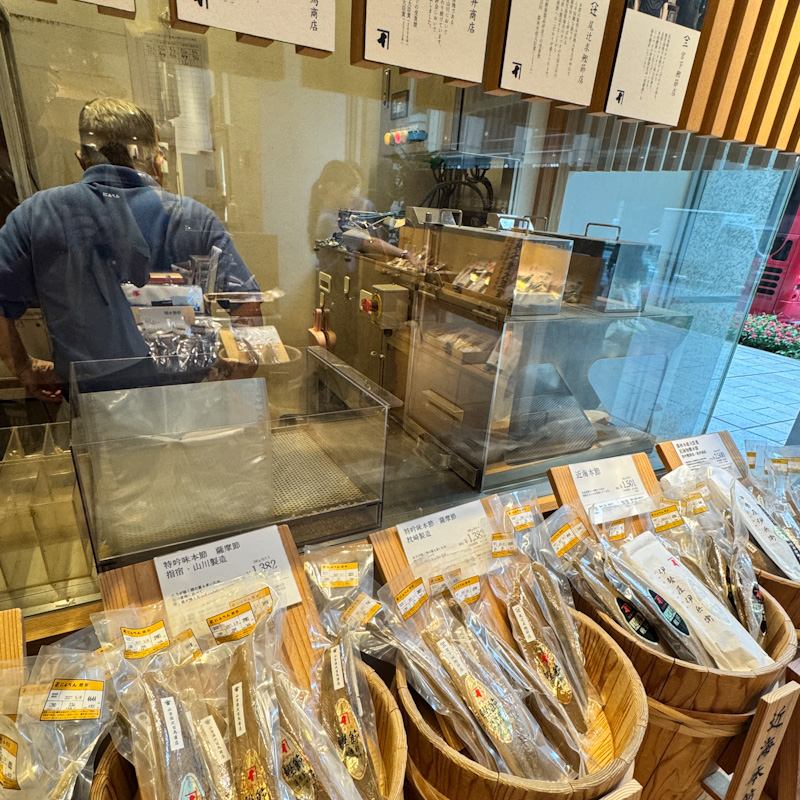
🏯 A 300-Year Legacy in the Birthplace of Nihonbashi
Founded in 1699, Ninben is one of Japan’s oldest producers of katsuobushi (dried bonito flakes). They’ve been based in Nihonbashi since the Edo period, when this riverside district was the literal and cultural center of commerce, trade, and taste.
Today, Ninben still calls Nihonbashi home, now nestled inside COREDO Muromachi. But don’t expect a flashy tourist trap—this is a compact, multi-sensory retail shop that balances tradition with accessibility.
You can browse a wide range of dashi products, sip freshly brewed dashi from paper cups, and grab a quick bite like tamagoyaki or katsuo-dashi rice bowls. There are a few standing tables if you want to eat on the spot, but it’s tight—more pit stop than sit-down.
🧠 Geeky Dashi Fact #1:
Kombu and katsuobushi create synergistic umami.
Kombu is rich in glutamic acid, while katsuobushi is high in inosinic acid. When these two umami compounds are combined—like in awase dashi—they don’t just add up, they multiply, creating a far more intense flavor than either ingredient could produce on its own. This is called umami synergy, and it's why a seemingly simple bowl of clear dashi can taste so deep and satisfying.
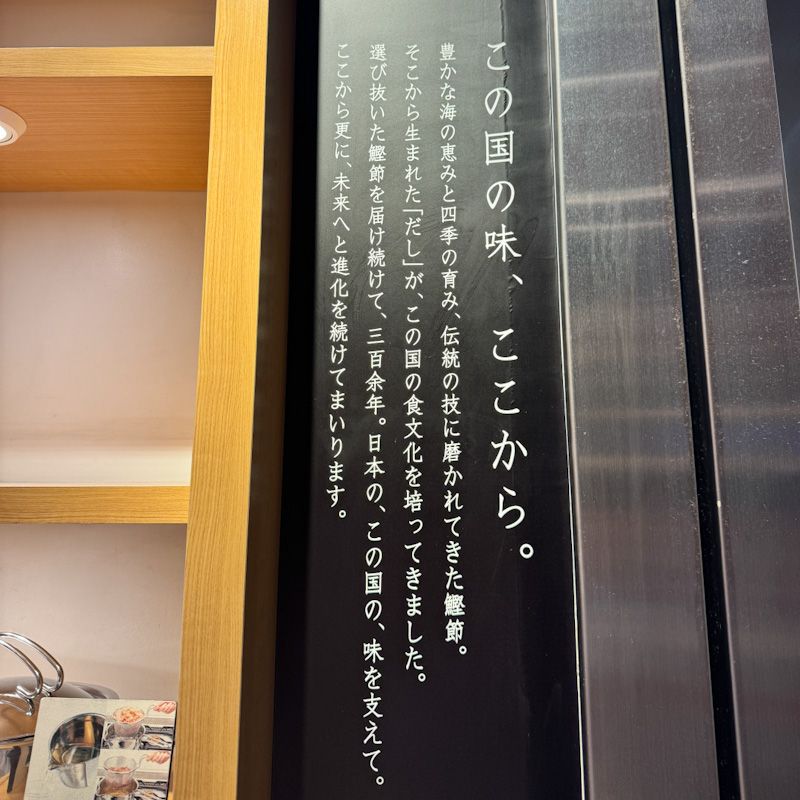
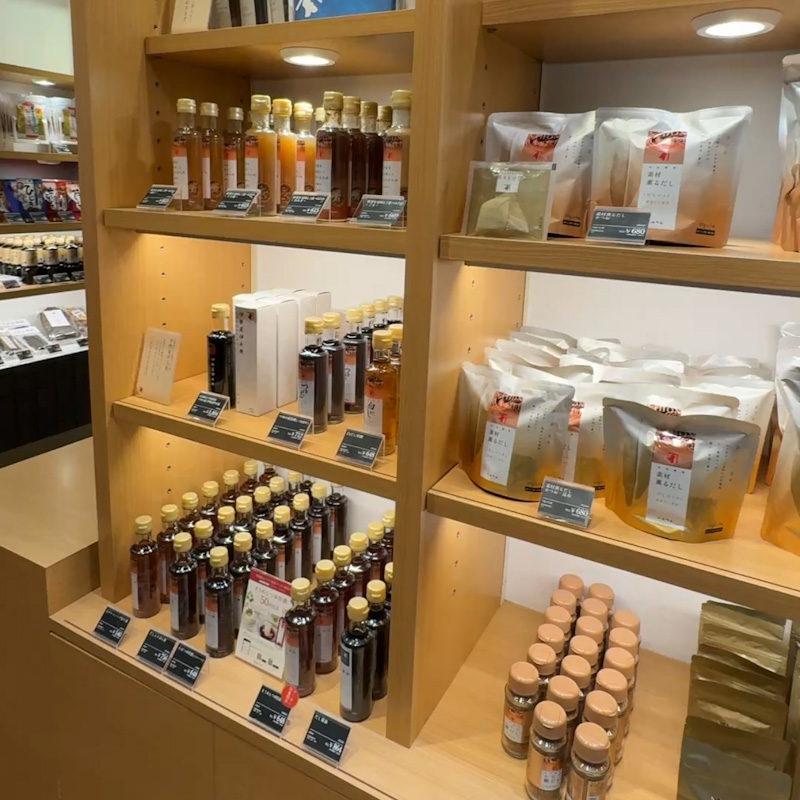
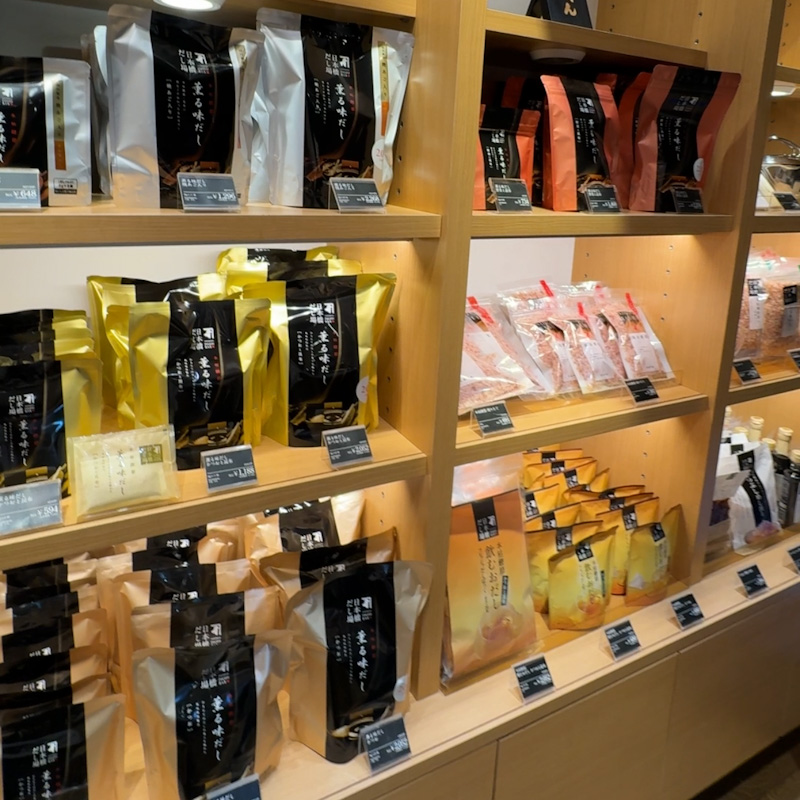
🔍 What’s Inside: Small Space, Big Experience
🍵 Dashi to Drink
You can try a small cup of freshly made dashi for slightly over a hundred yen. They serve different variations—classic katsuobushi-only, blended bonito and kombu, and even seasonal flavors like tomato or cream-style dashi. Surprisingly light, deeply satisfying, and perfect for picking apart subtle umami notes.
🐟 Bonito Shaving Machines
At the back of the store is a glass-walled room with traditional machines that shave honkarebushi—fermented, hardened bonito blocks—into flakes. Watching this is oddly meditative, and it reminds you just how much craft goes into a single handful of flakes.
🛍️ Retail Selection
About 70% of the accessible store area is the retail space. From simple dashi packs and kombu strips to premium bonito shaving boxes (yes, some costing over ¥30,000), the shop is a treasure chest. There’s even dashi-flavored candy, furikake, bottled sauces, tsuyu bases, and instant broths.
📚 Recipe Cards Everywhere
Every corner of the store features easy-to-follow recipes—how to use dashi in miso soup, tamagoyaki, hotpot, and yes, even ramen. It’s educational without being overwhelming and gives home cooks real ideas on what to do with the products.

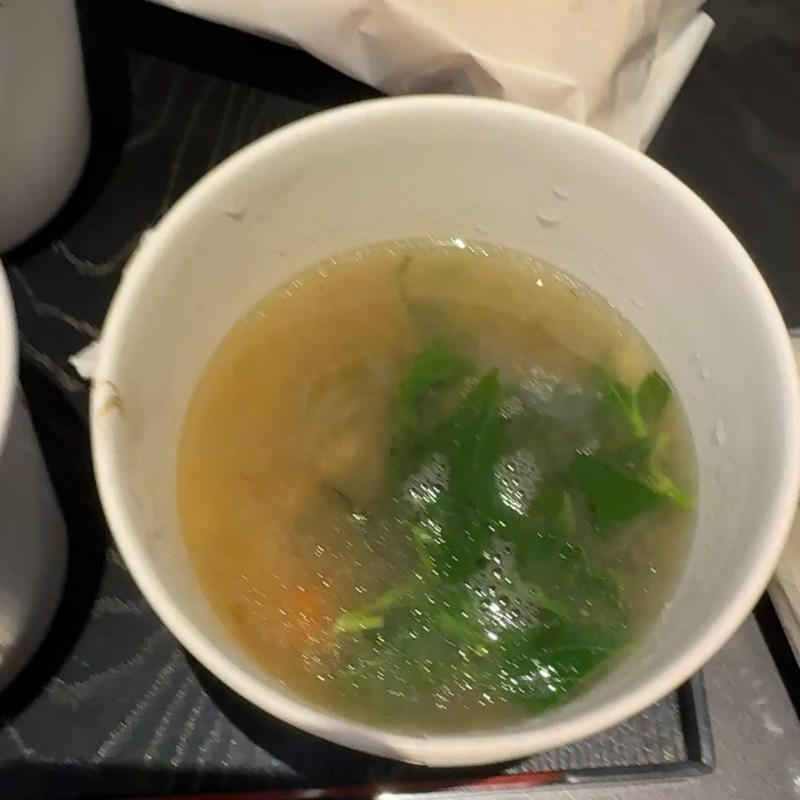
🧠 Geeky Dashi Fact #2:
Katsuobushi is one of the most intensely processed foods in traditional Japanese cuisine.
The best-quality katsuobushi (called honkarebushi) goes through fermentation, sun-drying, and repeated mold inoculation for months—even up to two years. The mold used (Aspergillus glaucus) isn’t just for preservation—it breaks down fats and proteins, concentrating the umami and giving the fish that distinct smoky, aged aroma. When you’re tasting dashi made from honkarebushi, you’re sipping something closer to cheese or prosciutto in terms of aging technique.
🍲 Know Your Dashi: Ichiban vs Niban
Dashi isn’t just one thing. It’s a layered concept, and at its core are two types:
Ichiban Dashi (First broth): The initial extraction using fresh kombu and katsuobushi. It’s clean, elegant, and used in soups where clarity and aroma matter—like shoyu ramen or chawanmushi.
Niban Dashi (Second broth): Made by reusing the same ingredients. It’s cloudier, slightly bitter, and stronger in body. Best used for nimono (simmered dishes) or heavier ramen styles.
Many ramen chefs combine the two for complexity—ichiban for aroma, niban for body.
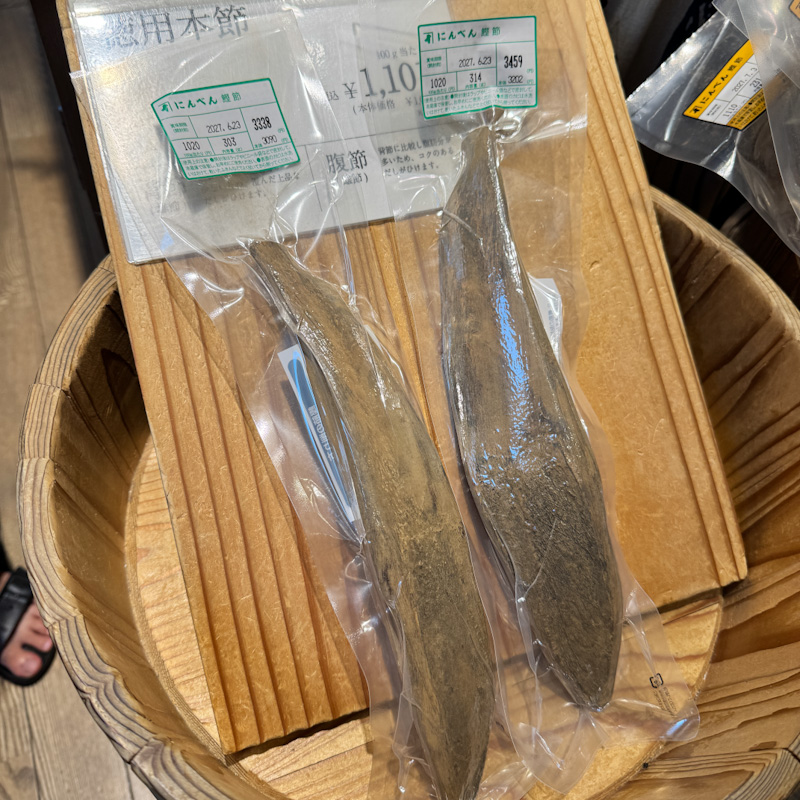
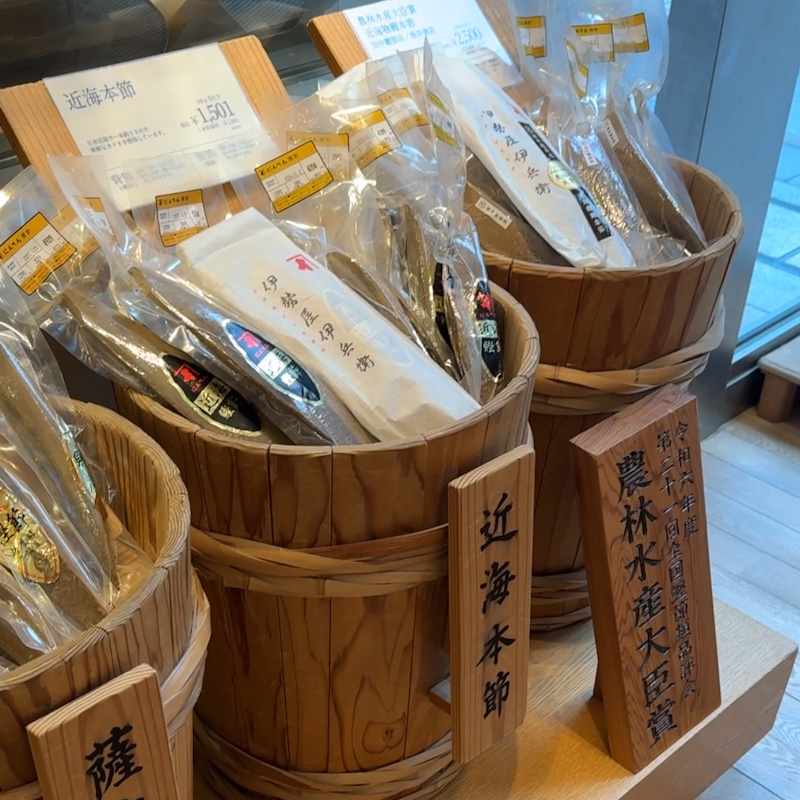
🧂 Dashi and Ramen: A Quiet Powerhouse
While tonkotsu and paitan broths get all the spotlight, many ramen broths—especially shoyu, shio, or seafood-based bowls—rely heavily on dashi:
- Kombu adds gentle sweetness and glutamate-driven umami.
- Katsuobushi contributes smokiness and savory depth.
- Niboshi (dried sardines) bring a salty, punchy kick—used in many Tokyo-style shoyu ramen.
- Ago (flying fish) offers a cleaner, lighter fish note.
- Shiitake mushrooms can be added for a subtle, earthy touch, especially in vegetarian ramen.
When layered right, these ingredients build a broth that’s not just salty or rich—it’s satisfying in a way you can’t explain until you’ve tasted it.
🏠 Tips for Ramen Lovers at Home
Even if you’re not slow-simmering bones at home, a few small tweaks can elevate your instant or homemade ramen:
1. Start with kombu: Soak it cold for at least 30 minutes to release the umami, then heat gently.
2. Don’t boil bonito flakes: Add them just before boiling point, then strain after a minute or two to keep things clean.
3. Use shirodashi: It’s an easy shortcut—1–2 tbsp in 250ml of water makes for a light but flavourful base.
4. Add dashi to tare: Even store-bought tare gets a lift with a spoonful of kombu or bonito dashi.
5. Top with katsuobushi: A few flakes at the end can bring a smoked depth to basic bowls.
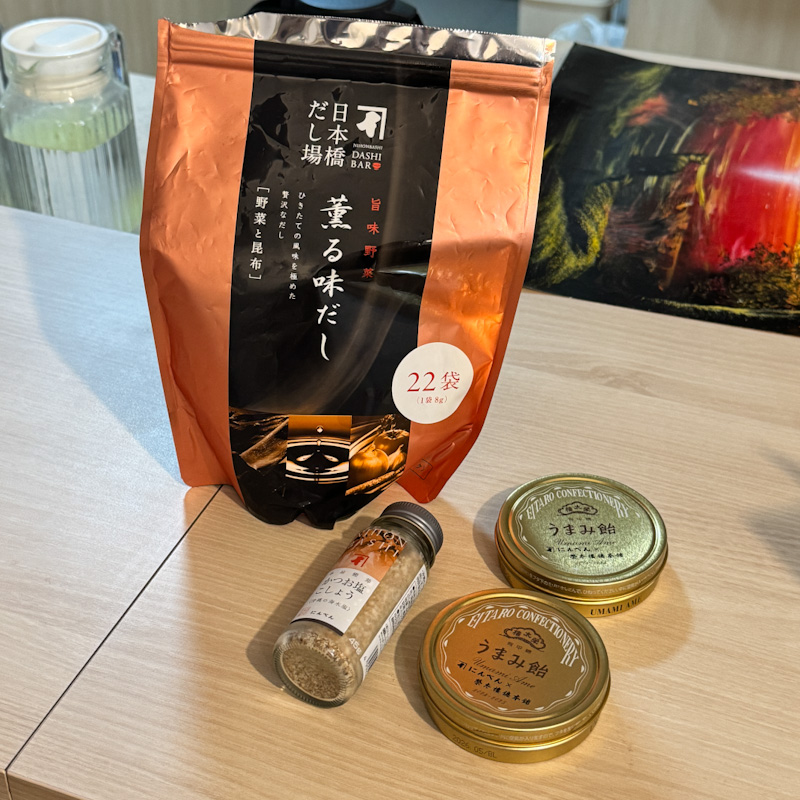
🛍️ My Picks from the Store
I’m case you are wondering what I bought. I ended up taking home:
- A pack of “rich dashi” soup stock. The lighter variants seemed better suited for udon or soba, according to the instructions, but I went for the richer version—recommended for more flavorful dishes like curry and stews. It felt like the right fit for someone who wants bolder flavors in a ramen-style broth.
- Dashi-flavored candy, which I just couldn’t resist. It makes a great novelty gift for my family—plus, I’m genuinely excited to see the weird looks on their faces when I hand them fish-stock candy.
- A dashi, salt, and pepper blend—the kind of thing you can keep by the stove for easy seasoning. It’ll come in handy for adding a final umami lift to homecooked dishes without overthinking it.
Nothing complicated—just simple, thoughtful stuff I know I’ll actually use. And more importantly, each one adds a small layer of flavor back into daily cooking.

